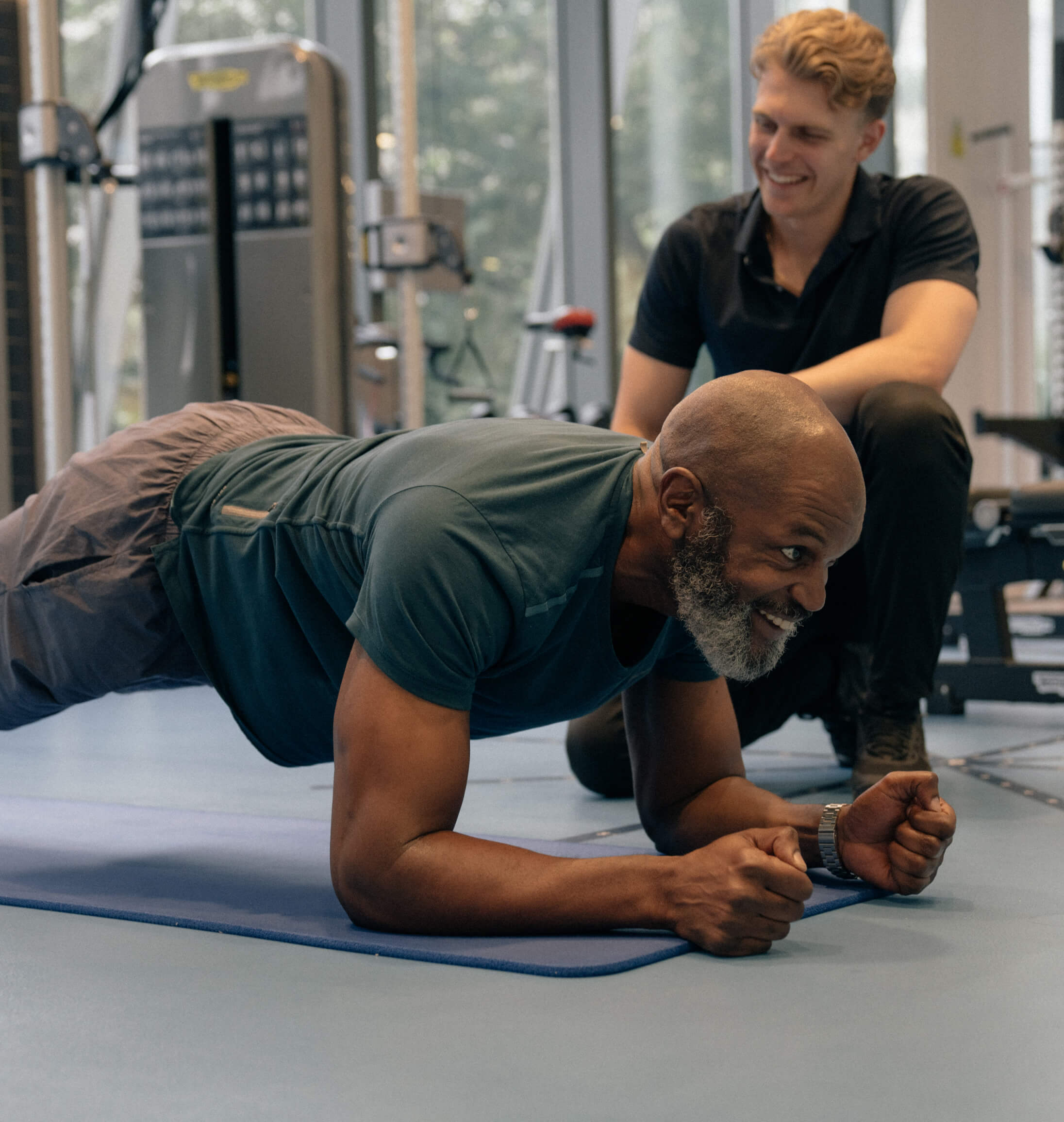Let’s Talk About: Training

Claire Small
Chief Clinical Officer & Consultant Physiotherapist
- 1 September, 2020
- Exercise
- 3 min read
Let’s Talk About: Training

Some common misconceptions of the word ‘training’ that I have been asked before include phrases such as:
“I can’t train because I’m not an athlete, I just do exercise, right?”
“Training is doing x3 sessions a day, killing yourself and having no social life, right?”
I can tell you with full confidence that these are 100% incorrect. Training is not just for professional athletes, and it doesn’t involve spending 99% of your free time in a gym (unless you want it to!).
So, in the spirit of myth busting, we now need to explore the truth behind training.
Training is what we do to get from point A, to point B. It’s the work we do to improve ourselves in order to accomplish a goal, and our goals can be anything. Whether it’s getting stronger, healthier or even beating your friend’s 5k time. Training should always be specific to you, your goals and your situation.
Behavioural psychology studies have proven that when it comes to long term training, adherence is key. If we don’t enjoy what we do, or are not fully motivated by our goal, then we won’t stick to it for a prolonged period. This makes perfect sense as the goal of any training programme is to gradually increase the amount we do, so if we’re not enjoying it at the start we certainly won’t want to keep doing more.
In the past, a patient once said to me “There’s no way training can be fun, right?”. Well, once again, it is an unfortunate myth. Training can absolutely be enjoyable.
Whatever it is you enjoy doing – do it! This can be anything from playing badminton, to hiking, to weight training etc. The key to making a training programme effective is being able to quantify what it is you’re doing and then making gradual increases (to the time or intensity of those activities) over a long period of time.
Let’s take the x3 activities mentioned above as an example. Tom’s personal goal is to lose some weight. He enjoys activities such as playing badminton, hiking and weight training and his current week involved playing badminton once a week, x2 gym sessions, and the occasional hike at the weekends. Tom and his S&C Coach are looking at gradually increasing the amount of time Tom takes part in these activities per week, over blocks of 4-6 weeks, in order to maintain consistency. Don’t forget, activities like dog-walking, running for the bus or hitting 10,000 steps counts towards your overall weekly activity, so it is also something we’d want to keep track of.
After the first x4 weeks of Tom’s training programme, we then decide on adding an extra badminton session per week. This, in turn, carries on for another 4-week block. Finally, we realise the outdoor pool he enjoyed going to is back open and we can now add in a swim on the weekends for the next 4-week block.
“Wait, did I just finish a 12-week training programme?”
Yes! Tom did it! It went by in a flash and didn’t feel like too much, overwhelming or a daunting task. The programme became part of his weekly routine and here he is at the 12-week point feeling better, stronger and accomplished!
The chart below represents the increases in Tom’s activity, as per our example above. You can see that the overall activity from the first week to the last is nearly double!
We can also see that even though there are weeks when there was no increase, or even a dip from the previous week (maybe Tom didn’t hit his step count – not to worry), the overall trend of the graph is still upwards. This is exactly what we want; gradually doing more activity, consistently, over a long period of time.
Obviously, we can’t keep increasing our activity like this forever – we actually have to go to work and look after our families etc – so once you’ve hit that point, it’s simply time for a new and more appropriate training programme to better fit your new goals. Your S&C coach will likely already have one planned out and ready to go.
So, no matter what your starting point is, there are very simple and effective ways to work towards, and ultimately achieving, your health and fitness goals.
If you have any questions for our Strength & Conditioning team, don’t hesitate to get in touch.

Advice
Over the last 20+ years our experts have helped more than 100,000 patients, but we don’t stop there. We also like to share our knowledge and insight to help people lead healthier lives, and here you will find our extensive library of advice on a variety of topics to help you do the same.
OUR ADVICE HUBS See all Advice Hubs

